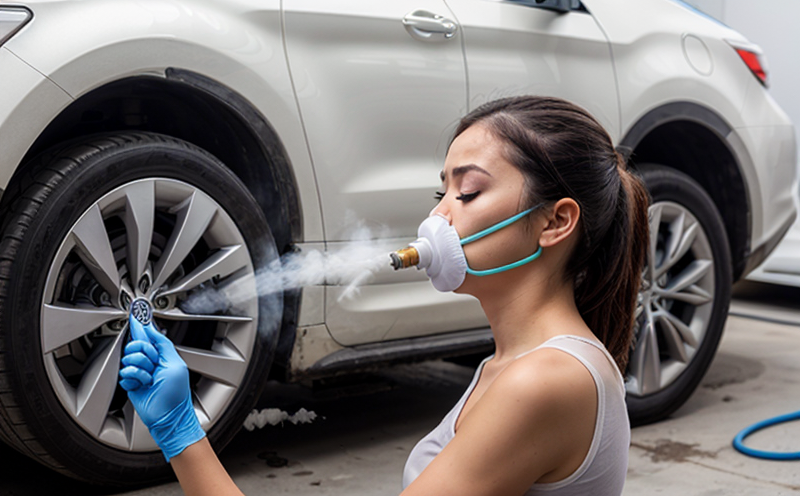EN 13501 Fire Emission Testing of Construction Materials
The European Standard EN 13501-1 defines the requirements and test methods to ensure that construction products do not release harmful substances into the atmosphere during fire. This standard is critical for ensuring both compliance with building regulations and protecting public health.
EN 13501-1 specifically addresses the emissions of flammable gases, vapors, and particulates from combustible materials in a simulated fire environment. The test aims to quantify these emissions under controlled conditions that mimic real-world fire scenarios. This information is vital for architects, builders, and engineers to select appropriate building materials that contribute positively to indoor air quality.
The testing process involves the use of a standard calorimeter chamber which simulates the combustion behavior of construction products. The specimen is placed in this chamber, where it is exposed to controlled fire conditions. Various parameters are measured during the test, including smoke density, carbon monoxide (CO) levels, and other toxic gases such as hydrogen cyanide (HCN). The aim is to ensure that no harmful substances are released into the atmosphere.
Specimen preparation is a critical step in this process. Samples must be representative of the construction material being tested. Typically, samples will be cut from larger pieces according to specified dimensions and tolerances provided by EN 13501-1. The sample should be conditioned to ensure it reflects its true moisture content before testing.
The test chamber is then ignited under controlled conditions, simulating the fire environment. Various instruments are used during the process, including flammable gas analyzers, CO detectors, and particulate matter counters. These devices provide real-time data on emissions, which are recorded and analyzed to determine compliance with EN 13501-1 requirements.
The results of the test are crucial for material selection in construction projects. Compliance ensures that buildings meet health and safety regulations while also promoting sustainable practices by minimizing harmful emissions during fires. The test is particularly important for materials used in residential, commercial, and industrial settings where indoor air quality can significantly impact occupant well-being.
In summary, EN 13501-1 fire emission testing of construction materials plays a pivotal role in ensuring that building products do not release harmful substances during fires. This standard is essential for maintaining public health and safety while promoting the use of sustainable materials in construction projects.
Applied Standards
The primary applied standard for this testing service is EN 13501-1, which provides a comprehensive framework for assessing fire behavior and emissions from building products. This European Standard is widely recognized and used across Europe to ensure that construction materials meet stringent safety and environmental standards.
EN 13501-1 requires the use of specific test methods designed to simulate real-world fire conditions accurately. The standard specifies detailed procedures for specimen preparation, chamber setup, and testing protocols. It also defines acceptable limits for various emission parameters, ensuring that construction products do not pose a risk to public health or the environment.
The EN 13501-1 framework is essential for material selection in compliance with building regulations. Architects, builders, and engineers rely on this standard to ensure that the materials they choose meet both safety and environmental standards. The test results provide valuable data that can be used to make informed decisions about which products are safest and most environmentally friendly.
Industry Applications
- Evaluating the fire behavior of building materials for compliance with local regulations.
- Determining the safety of construction materials in residential, commercial, and industrial settings.
- Ensuring that materials meet stringent environmental standards to promote sustainability.
- Providing data to support product development and improvement initiatives.
This testing service is particularly useful for architects, builders, engineers, and material suppliers who need to ensure their products comply with EN 13501-1. The test results can be used to demonstrate compliance during regulatory audits or to support marketing efforts by highlighting the safety and environmental benefits of a product.
International Acceptance and Recognition
EN 13501-1 is widely recognized across Europe and has been adopted as a standard in many countries. Its broad acceptance ensures that test results are valid and can be used internationally, promoting consistent quality standards for construction materials.
- Australia: While not directly referenced, the principles of EN 13501-1 may influence local standards such as AS/NZS 9702:2004.
- Canada: Provincial and municipal building codes often align with European standards like EN 13501-1.
- United States: Although not directly referenced, the principles of this standard may influence ASTM E907 or NFPA standards for fire performance testing.
The widespread acceptance of EN 13501-1 ensures that test results are valid and can be used internationally. This consistency in quality standards is crucial for global trade and ensures that construction materials meet the highest safety and environmental standards.





